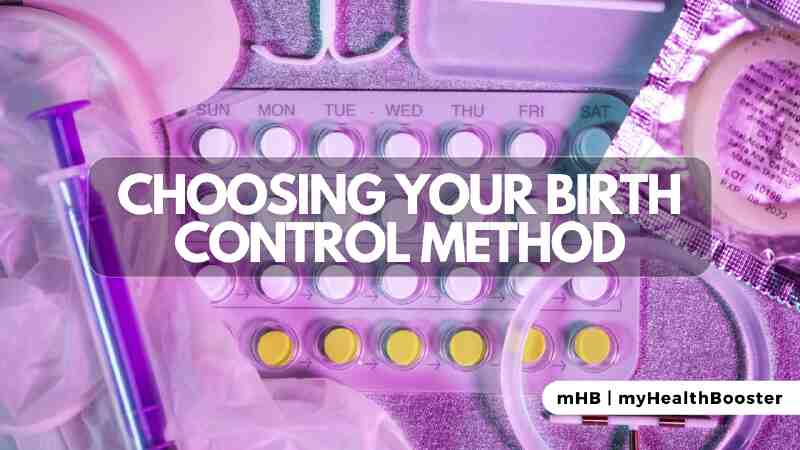Selecting a suitable contraception method can be a daunting task with the multitude of options available today, ranging from birth control pills to implants. To ease this decision-making process, it is helpful to address some fundamental questions:
- Importance of STD Protection: Not all contraceptives safeguard against sexually transmitted diseases (STDs). Assess the significance of STD protection in your decision-making.
- Desired Effectiveness: The effectiveness of contraceptive methods varies. Consider how crucial a high level of effectiveness is for your peace of mind.
- Convenience and Cost: Evaluate the importance of factors such as convenience, cost, and the duration of contraceptive effectiveness. Assess how much you can allocate to your birth control method.
- Sexual Pleasure: Does the impact on sexual pleasure influence your choice? Some methods may enhance your sex life, while others might pose limitations.
While abstinence remains the only 100% effective method, other approaches can be nearly as effective when used correctly. The effectiveness of contraceptive methods is measured in “typical use,” considering real-life usage scenarios, including inconsistencies and incorrect use.
Natural Family Planning Method
What is Natural Family Planning?
Natural family planning, or fertility awareness, involves timing sexual activity to avoid a woman’s most fertile period. This method relies on understanding the woman’s fertility cycle to prevent pregnancy.
How is Natural Family Planning Used?
Predicting ovulation through methods like measuring basal body temperature, monitoring cervical mucus, or using the calendar method helps determine fertile days. Although cost-effective and drug-free, it requires tracking your cycle consistently.
Effectiveness: Typical use: 76% effective
Spermicide
Spermicides, chemicals that kill sperm, come in various forms such as foams, creams, or jellies. Used in conjunction with other methods, they block sperm movement, preventing fertilization.
Effectiveness: Typical use: 72% effective
Male Condoms
Male condoms act as a barrier method, preventing contact between sperm and egg. They are easily accessible, inexpensive, and offer STD protection.
Effectiveness: Typical use: 82% effective
Female Condom
Inserted before sex, the female condom provides protection and stimulates the clitoris. While convenient, it has a moderate effectiveness rate and may cause irritation.
Effectiveness: Typical use: 79% effective
Diaphragm
A rubber dome inserted into the vagina before sex, the diaphragm blocks the cervix, preventing sperm from reaching the egg.
Effectiveness: Typical use: 88% effective
Pros:
- Low cost
- Reusable
Cons:
- No STD protection
- Requires a doctor visit for fitting
Birth Control Pills
The most common hormonal contraception, birth control pills prevent ovulation and thicken cervical mucus.
Effectiveness: Typical use: 91% effective
Pros:
- Very effective
- May reduce menstrual cramping
- Cost may be covered by health insurance
Cons:
- No STD protection
- Requires daily usage and prescription
Birth Control Patch
The birth control patch is a hormonal contraceptive applied to the skin, changing weekly. With a typical use effectiveness of 91%, it shares similarities with birth control pills.
Vaginal Ring (NuvaRing)
The vaginal ring, worn inside the vagina for three weeks, contains estrogen and progestin, preventing eggs from leaving the ovaries. With a typical use effectiveness of 91%, it offers an alternative to daily hormonal methods.
Birth Control Shot (Depo-Provera)
The birth control shot involves injections every 12 weeks, containing progestin to prevent pregnancy. With a typical use effectiveness of 94%, it is a convenient long-term option.
Birth Control Implant (Implanon and Nexplanon)
Birth control implants deliver progestin, preventing eggs from leaving the ovaries. With a typical use effectiveness of 99.95%, they are long-lasting and reversible.
IUD (Intrauterine Device)
The IUD, a T-shaped device inserted into the uterus, prevents pregnancy for several years. With a typical use effectiveness of 99%, it is a long-lasting option with hormonal and non-hormonal variations.
Tubal Ligation
Tubal ligation, a surgical procedure blocking the fallopian tubes, offers permanent birth control with a 100% effectiveness rate.
Vasectomy
Vasectomy is a permanent birth control option for men, involving the surgical closure of the vas deferens. With a nearly 100% effectiveness rate, it offers a reversible option for some.
Emergency Contraception
Emergency contraception methods, like hormonal pills or the Copper T IUD, provide protection after unprotected sex, with effectiveness ranging from 89-99%.
Birth Control for Older Women
For older women, lifestyle factors and age influence the choice of birth control methods. Hormonal methods may offer additional benefits for those approaching menopause, relieving perimenopausal symptoms.
Withdrawal (Pulling Out) Method
The withdrawal method, while free and non-invasive, requires precision and trust. With a typical use effectiveness of 86%, it is less reliable compared to other methods.
Least Effective Birth Control Methods
Methods like no birth control, spermicides, fertility awareness, female condoms, and withdrawal are among the least effective, with effectiveness rates ranging from 72-86%.
Most Effective Birth Control Methods
On the other hand, hormonal methods, IUDs, and permanent birth control options are highly effective, with rates ranging from 91-99%.
Choosing the right birth control method involves considering factors such as effectiveness, convenience, and personal preferences. Consult with a healthcare professional to find the most suitable option for your needs.
REFERENCES
- CDC: “Contraception.”
- CDC: “Effectiveness of Family Planning Methods.”
- Planned Parenthood: “Spermicide & Contraceptive Gel.”
- Association of Reproductive Health Professionals: “Choosing a Birth Control Method”
- CDC: “Effectiveness of Family Planning Methods”, “Contraception”
- Planned Parenthood: “Spermicide”, “Condom”, “Diaphragm”, “Cervical Cap (FemCap)”, “Birth Control Sponge (Today Sponge)”, “Birth Control Patch”, “Birth Control Vaginal Ring (NuvaRing)”, “Birth Control Shot (Depo-Provera)”, “Morning-After Pill (Emergency Contraception)”
- Princeton.edu: “What Is Emergency Contraception”
- U.S. Department of Health and Human Services: “Fertility Awareness (including Natural Family Planning) Fact Sheet”
- U.S. Food and Drug Administration: “Essure Permanent Birth Control”
